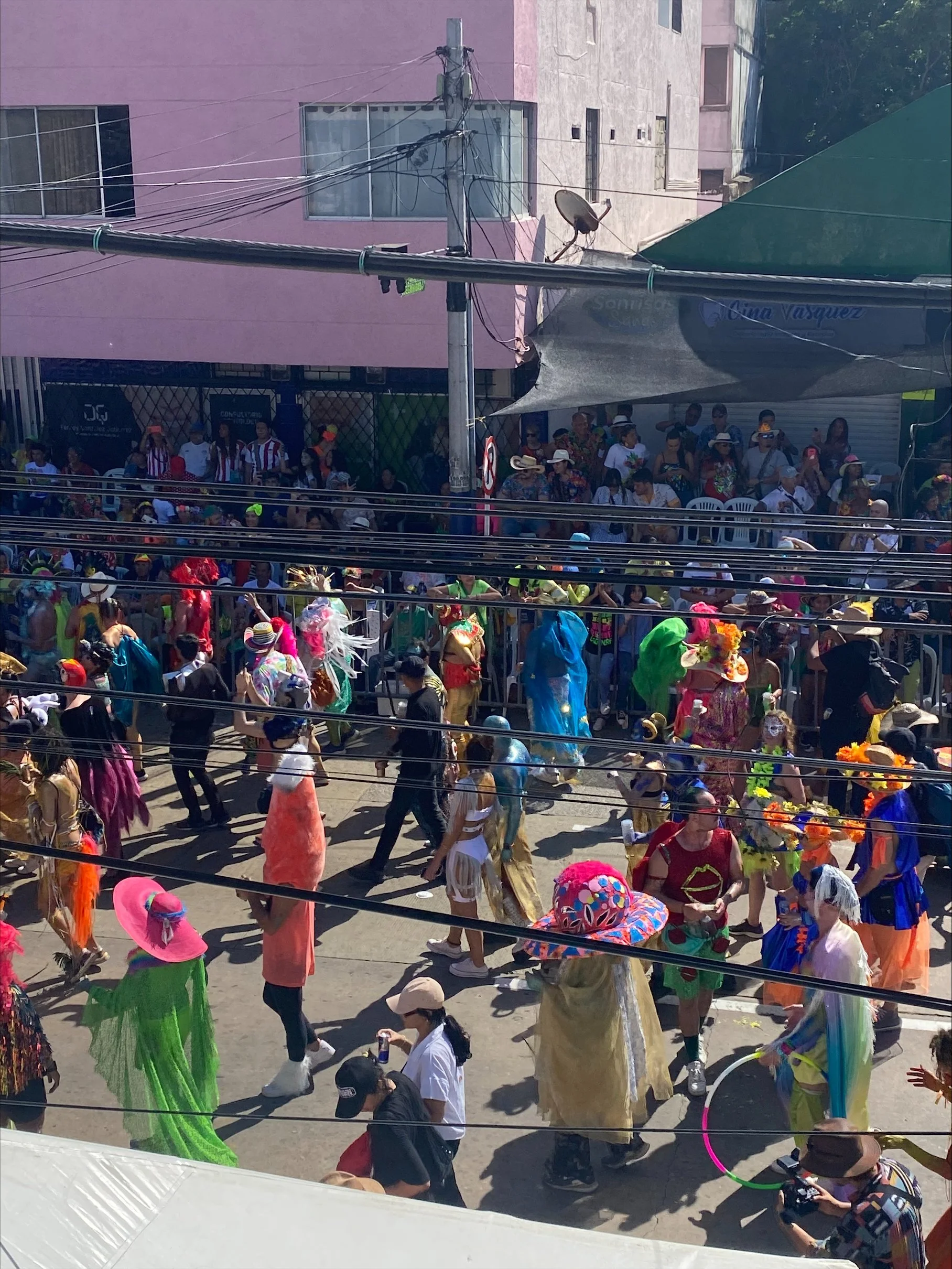Carnival, Sound Systems and African Music in Barranquilla
Barranquilla carnival. Image credit- Sharleen Opia.
Carnival exaggerates, caricaturises, expands, shapes, and feels. Carnival is a “living archive”. Barranquilla, a city of approximately 2 million inhabitants on the Caribbean coast of Colombia hosts the most important carnival in the country, and one of the most important in the world, every February, and I had the pleasure of being able to attend.
During the parade, many performers reenact cultural and historical realities - often that of black and indigenous communities. They may do so by reimagining the past, building a parallel dimension wherein the body, ritual, and the supernatural interweave to construct new dimensions of time. One of the most striking characters is the ‘Son Negro’, a character that performs a dance that represents the everyday lived reality of Afro-Colombian fisherman, labourers, and farmers, accompanied by pulsing drums. Its roots lie amongst the palenqueros, captured Africans who escaped slave ports on the coast to build their own communities, maintaining strong linguistic and cultural ties to their ancestry.
For many of us, blackface brings up historical mocking depictions of black people; it involves caricaturising in an attempt to disempower and ridicule. The ‘Son Negro’, however, reclaims darkness as power and agency, and the body is covered in black paint to exaggerate and heighten blackness. These performances are processes of reclaiming and recontextualising; they are the literature of cultures that valued living, telling, feeling as dynamic forms of memory work over the inflexible written word.
Music, one of the most ancient forms of cultural expression, grounds us in the pleasure of listening and, visually, the colours, costumes, and elaborate parades of Carnival symbolically represent the beauty of nature, of symmetry. Through dance, laughter, and theatre, the body is brought into movement within community, a space where all are able to experience a sensorially immersive and embodied experience. Communal festivities nourish the soul, and I often felt showered in joy, dancing in the heat to live drumming with strangers whose smiles emanated bliss and whose bodies moved in lively unison to the rhythms we were experiencing together. Human connection and pleasure exist within shared sensory experience, in feeling at the same time.
Carnival music vinyls in Barranquilla. Image credit- Sharleen Opia.
Barranquilla, as well as its sister city Cartagena, are home to a culture of sound systems known as picós. Characterised by their colossal size and elaborate artwork, these sound systems are ordained with neon bright colours, tropical imagery, and important Latino figures. Mechanics sent to work on planes sold to leader Mobotu Seko de Zaire brought African music vinyl discs (from the region we now know as the DRC) in the mid 20th century, forming the now inseparable relationship between African
music and picós. Due to the financial and practical barriers impeding this transnational exchange, champeta criolla, a genre of Spanish language music inspired in African rhythms, was born in the late 80s in Cartagena. Colombian artists began making their own versions of songs whose lyrics they never understood, but their connection to these sounds existed outside of language, rooted deeply in the ineffable feelings between melodies and rhythms. Primarily inspired by the genre Sokous, native to the DRC, but also taking inspiration from afro-Antillean music like Haitian kompa, Trinidadian soca, Jamaican dancehall, and West African genres such as highlife and afrobeat , this genre is a vital element of Barranquilla carnival as well as la cultura costeña (the cultures of the coastal regions of Colombia).
Due to the immense vibrations they emit, picós have a more overwhelming effect once their sound waves reach the body; their basslines essentially thunder into the depths of the earth below, the ideal speakers for music that prioritises danceability through heavy basslines and contagious percussions. The picó culture is the perfect analogy of Barranquilla carnival: a myriad of colours, cultural pride, and sensual embodiment.

